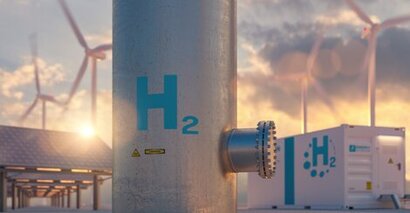
The report draws from extensive industry engagement and offers critical insights for stakeholders navigating the complexities of the hydrogen sector.
Having attended major hydrogen industry events across Europe in recent months, Rethink Energy has captured the prevailing sentiment and identified key industry challenges. A significant theme emerging from these discussions is the urgent need for a clear legal framework.
The electrolyser market, a cornerstone for green hydrogen, hinges on predictable future demand for green hydrogen. Reliable demand projections are essential for scaling investments in the supply chain, starting with electrolyser manufacturing facilities.
The report also addresses the critical issue of financing. Clear regulatory frameworks are vital to secure the capital flows needed to initiate and sustain large-scale projects. The report emphasises that long-term business plans must be self-sustaining, beyond reliance on temporary incentives. The US market, for instance, has seen a slowdown due to uncertainties around Section 45V and upcoming elections, while Europe continues to seek greater clarity.
The report delves into the various electrolyser technologies, including proton exchange membrane (PEM), alkaline (ALK), anion exchange membrane (AEM), and solid oxide electrolytic cells (SOECs). Each technology has its advantages and challenges, with ALK known for lower costs and PEM for better intermittency response. Innovations are continually emerging, with startups exploring new materials and operating parameters to enhance efficiency and commercial viability.
SOECs, benefiting from waste heat applications, are highlighted for their high efficiency, despite the ongoing challenge of reducing operating temperatures.
The global electrolyser capacity is expected to surge as multi-gigawatt manufacturing plants become operational worldwide. The demand for green hydrogen is gaining momentum in sectors such as aviation, maritime shipping, and steel manufacturing, with oil majors also spearheading decarbonisation efforts in their refineries.
Rethink Energy predicts an S-type adoption curve, with investments and installed capacities skyrocketing towards the end of the decade. By 2050, the demand for green hydrogen is anticipated to increase fivefold, driven by various technological advancements and regional market dynamics.
This report's conclusions are based on current data, industry trends, executive interviews, and insights from leading hydrogen sector events. Rethink has analysed manufacturing capacities, policy landscapes, and key demand sectors to forecast each technology's market potential. The report also examines the geographical distribution of hydrogen use and technology manufacturing, providing a comprehensive understanding of market influences.
The report is aimed at stakeholders across the hydrogen value chain. Governmental institutions can utilise the insights to inform national strategies and tender schemes. Energy producers and industry players will benefit from detailed analyses of current technologies to align their future strategies with commercial opportunities.
For additional information:

